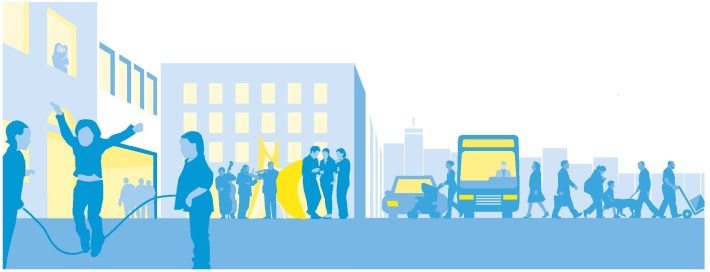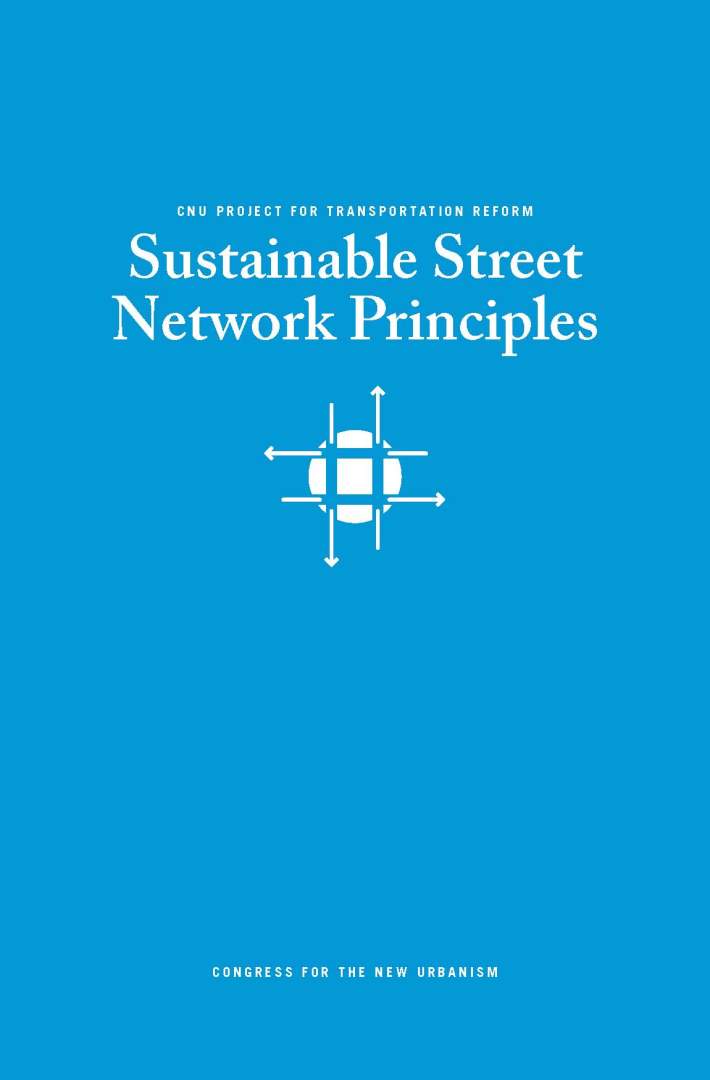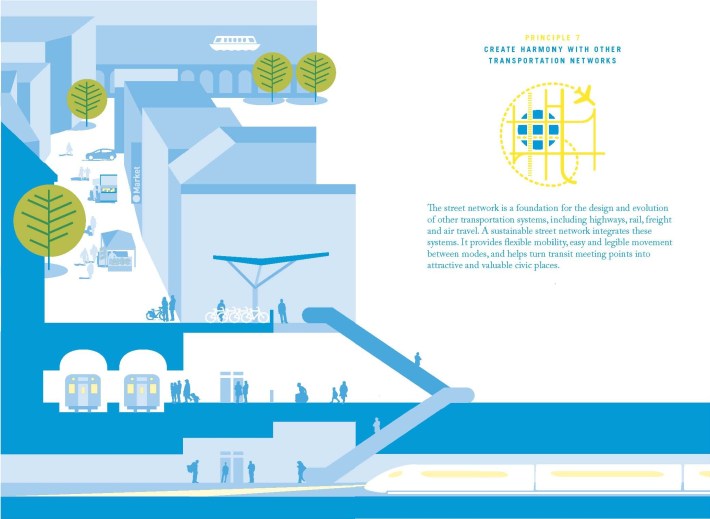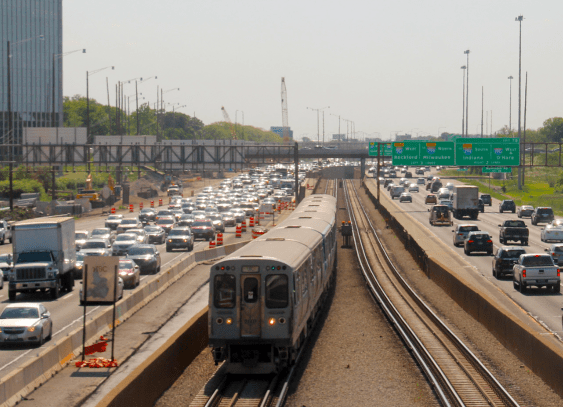At the Transportation Research Board's 91st annual meeting here in DC, it's hard to miss the booth handing out copies of a bright blue pamphlet filled with illustrations of busy tree-lined streets, where bicyclists and buses work their way through a bustling urban bazaar. The booth is the Congress for New Urbanism’s “occupation” of TRB, and the pamphlet is their new illustrated Sustainable Street Network Principles, a document aimed at explaining in very basic terms what's wrong with America's streets -- and how to fix them.
The goal of the Principles is to promote development patterns that add value to communities. The way to do that, said CNU President John Norquist, is to design streets to play three simultaneous roles: that of a transportation thoroughfare, a commercial marketplace, and a public space. "Typically, U.S. DOT and State DOTs tend to look at roads only in the dimension of movement, and even in that one dimension, their rural-style forms fail in the city," Norquist says.
The principles are a plain-language counterpart to the Institute of Transportation Engineers’ "Designing Walkable Urban Thoroughfares," a collaborative effort with CNU which came out in March 2010 and is written in “engineerese” according to Norquist. By contrast, “the Principles are very readable,” he said, “and can be used to encourage local public works authorities or departments of transportation to do something in cities that adds value to neighborhoods.”
Those authorities don't always have a very good record in that department. For decades now, government transportation policy has been geared toward speeding up long trips, while ignoring issues of walkability and the corresponding value added to neighborhoods. "If one person has to cross the street to get to work, and another drives 25 miles to work in the same building, the government is obsessed with helping the guy who drives, even though the guy who walks contributes more net value [by using fewer resources, spending less time in traffic, etc.]" Norquist told Streetsblog. "If you look at the little blue book, it’s designed to challenge that idea."
One upshot of that shortsightedness, Norquist explained, is that for too long policymakers have attempted to minimize congestion, often employing the warlike verbs "eliminate," "destroy" or "combat" to describe their approach to doing so. "But there are worse things than congestion," says Norquist, who has written before on the subject. "It's sort of like cholesterol: there's good and bad. You die without any cholesterol, and cities die if they don't have congestion. Look at Detroit: they've defeated congestion, but now that's the least of their problems. They're missing congestion, but federal policy is to destroy it."
So, why "occupy" TRB? The need for an “occupation,” Norquist said, comes from the continued insistence on the part of transportation policymakers to blindly adhere to the "Green Book," the roadway design manual published annually by the American Association of State Highway and Transportation Officials. Congestion reduction is paramount in the Green Book, which in Norquist's view essentially encourages state DOTs to spend their money expanding capacity on freeways.
But Norquist argues that maximizing throughput does not add any value to an urban context, and in fact drains value from the land roads run through. State DOTs should instead be encouraged to concentrate on building dense, walkable street networks.
The first step in shifting that paradigm was CNU's collaboration with ITE, which resulted in the walkable thoroughfares guide. This "Little Blue Book" represents the next step, a plain-language explanation of a better way to design street networks, accessible enough to reach a much larger audience.
The final step will be its adoption by AASHTO, about which Norquist is cautiously optimistic. "They'll resist for a while, but they'll adopt it eventually," he said.








